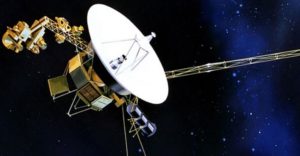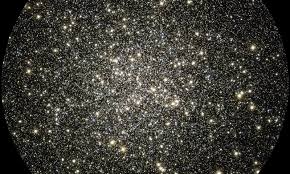
Voyager 2 Probe Of NASA To Enter Interstellar Space
The Voyager 2 probe of NASA launched in the year 1977 has detected an increase in cosmic rays that originate outside our solar system, and this implies that it is very near to the interstellar space.

Once Voyager 2 comes out of the heliosphere (the outermost layer with vast bubble around the Sun and the planets dominated by solar material and magnetic fields) it will become the second human-made object, after Voyager 1, to be able to enter interstellar space, NASA said in a statement on Friday.
Voyager 2 is somewhat less than 17.7 billion km away from Earth and this can be said that it is more than 118 times the distance from Earth to the Sun.

The Voyager 2 probe is the only spacecraft to visit all four giant outer planets, that is, Jupiter (1979), Saturn (1981), Uranus (198) and Neptune (1989).
Voyager scientists have been keeping a watch for the spacecraft to reach the outer boundary of the heliosphere, known as the heliopause.
“We’re seeing a change in the environment around Voyager 2, there’s no doubt about that,” said Voyager Project Scientist Ed Stone from NASA’s Jet Propulsion Laboratory in Pasadena, California.
The “Cosmic Ray Subsystem” instrument on Voyager 2 has successfully measured almost five percent increase in the rate of cosmic rays since late August hitting the spacecraft compared to early August.
The Low-Energy Charged Particle in the probe has made detection of a similar increase in higher-energy cosmic rays.
“We’re going to learn a lot in the coming months, but we still don’t know when we’ll reach the heliopause. We’re not there yet – that’s one thing I can say with confidence,” Stone added.
Apart from the Voyager 2, three other spacecraft are on interstellar trajectories. Among them is the New Horizons which is closing in on a Kuiper Belt Object which is more about a billion miles beyond Pluto on January 1, 2019.
The other two are Pioneer 10 and Pioneer 11, but both of them are not at all functioning but are going to travel into interstellar space.
In the month of May of 2012, Voyager 1 experienced an increase in the rate of cosmic rays which are similar to what Voyager 2 is as of now detecting.
“That was about three months before Voyager 1 crossed the heliopause and entered interstellar space,” said NASA.
Voyager 2 was first launched by NASA on August 20, 1977 as a space probe mission to study the outer planets.
You May Also Read: Researchers Find New Distant Object During Hunt For Planet X